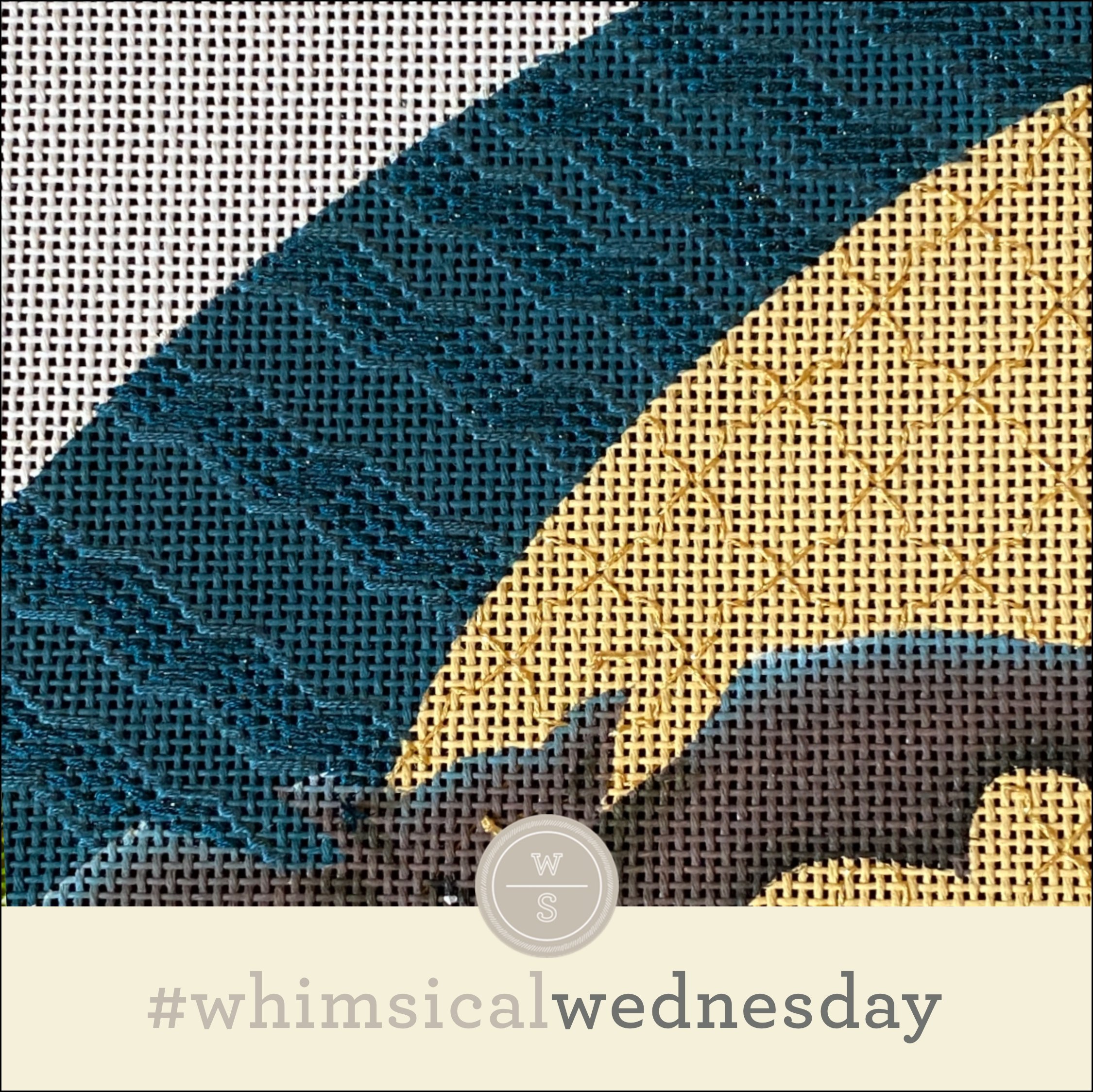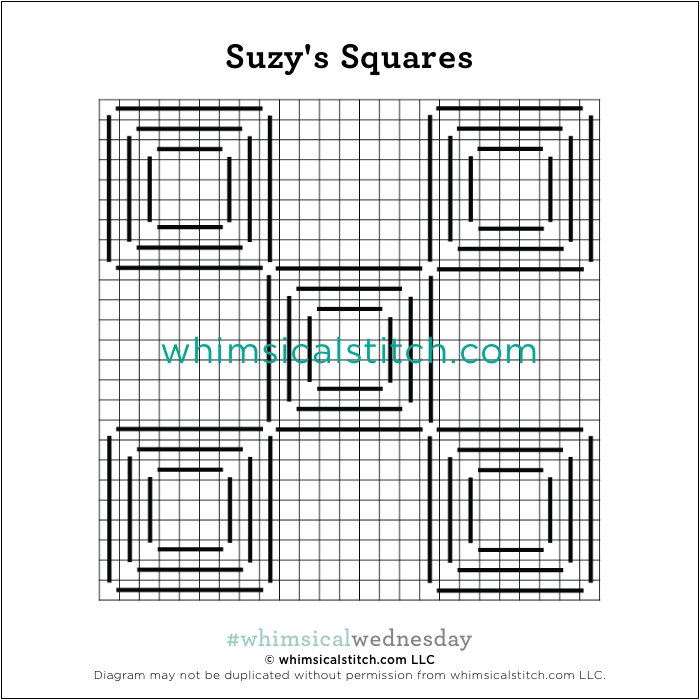Today’s stitched sample may look incomplete. It is, but it also illustrates two versions of the stitch. And, best of all, the stitched sample shows how to navigate compensation through large areas.
The idea for this stitch started when I was working on a different diamond stitch a couple of weeks ago. The stitched sample uses the identical three plies of Soie Cristale (black lines) and two strands of Petite Silk Lame (aqua lines). This stitch has the perfect amount of openness for a background. The top of the canvas includes the Upright Crosses in the center of the diamonds, and the bottom eliminates them to give it a lighter look. (I will add the Upright Crosses in the open diamonds for the final background.)
Navigating the compensation through the flowers wasn’t fun in the beginning. Looking closely at the stitched sample, you’ll see yellow stitches at the top and bottom of the pink flower. Those are what I call fake stitching. I took a piece of random thread on my desk and stitched the bare minimum of the stitch through an area to get to the next patch of background.
I typically stitch from the center of a piece and out to the edges, meaning I do the background last most of the time. I am aware I am an outlier here, but it’s what works for me. I don’t love the idea of my arms or hands on top of existing stitching, especially on larger canvases. If a background requires delicate compensation around branches or other fiddly areas, I’ll stitch the background in the center and leave the remaining for later. Today’s example is a perfect case of when to do the background first. Compensation through stitched areas is not my favorite thing to do.
I hope you have the perfect spot for today’s stitch. Have fun playing with it!
As you are auditioning stitches (from any stitch source), count the number of canvas threads on the diagram that match your mesh size. And there you have what an inch of the stitch will look like. Evaluate that against the area where you plan to use the stitch and make your final decision. If you start integrating this step into your stitch selection process, you may be surprised at how many stitches you think are large are much smaller than you realize.
By (sometimes) including this step in my own process, I find I am now integrating much longer stitches than I ever thought I would. I used to think a stitch six rows long was super big. I have very much changed my tune, which has helped me expand my creativity, especially for large-space stitches.
Today’s stitch diagram, along with all other #whimsicalwednesday and #smallspacesunday stitch diagrams, can also be found on a Pinterest board here. Be sure to follow whimsicalstitch.com on Facebook, Pinterest, Instagram, and Twitter.
If you like what you see on this blog, there's more. Mary’s Whimsical Stitches is a series of four books offering contemporary how-to collections of more than 200 stitches (in each volume) for all stitchers, regardless of skill level. All books include updated and sequenced diagrams from this blog, plus a collection of all-new stitches from private lessons and other class projects. Visit here to find a needlepoint retailer that carries my books.
New to needlepoint or looking for a refresher? Please download a handy how-to guide covering basic needlepoint stitches and stitch compensation techniques along with new top-line information on needlepoint materials and tools, how to handle threads, and other helpful needlepoint resources.
whimsicalstitch.com also sells Stitch Guides and Stitch Concepts for Melissa Shirley Designs, Zecca Designs, Sandra Gilmore, Purple Palm, Maggie, and Penny MacLeod, and many more. Click here to see the newest guides and click here to see the entire collection.
I hope you have the perfect spot for this stitch! Please enjoy! Have a wonderful #whimsicalwednesday!
A Note about Diagrams
I use color in diagrams to make them as clear as possible. The primary function of different colored lines is to illustrate a stitch sequence. For example, the layering of colors demonstrates you add them in that order. They can also provide ideas on integrating additional threads (one line for each color). Or, you can use the same thread for all color lines. That's where I encourage you to use your imagination for the space you are stitching!


























